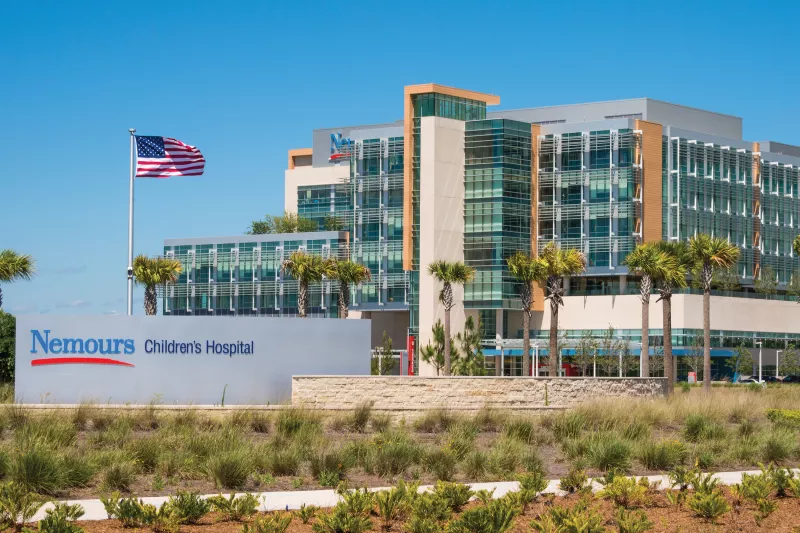
Giving pediatric patients a lot of extra TLC.
Nemours Children’s Hospital integrates Axis cameras into the heart of critical patient care to augment health assessment and accelerate emergency response. The video solution has become an important tool in improving clinical outcomes.
Mission
Like all medical facilities, Nemours Children’s Hospital continuously monitors patients’ vital signs. But patient health can’t always be assessed by clinical data alone. Seeing the minute changes in a patient’s color or noting increased restlessness can be a sign of escalating problems. Since it would be impossible for medical staff to be in every patient’s room simultaneously, the hospital wanted to install video cameras in each room so that paramedics remotely monitoring patient vitals could also visually see if the child was in distress and call for immediate medical attention.
Solution
Nemours created a Tactical Logistics Center (TLC) – also known as the Clinical Logistics Center – where a rotating team of paramedics continually checks patient vital signs through a central monitoring system. In addition to the clinical data, the TLC integrates live streaming video from Axis network cameras in each patient’s room through Epic software.
Designed with wide dynamic range for great forensic detail in both bright and poor light conditions, the Axis cameras help paramedics detect small changes in a patient’s health, sometimes even before vital signs indicate that there is a problem.
Result
Paramedics at the TLC use the Axis cameras to monitor over 100 in-patients in the hospital’s Orlando location as well as over 150 beds in its sister hospital, Nemours/ Alfred I. duPont Hospital for Children, in Wilmington, Delaware. They’ve observed patients at the very moment they’ve gone into seizure and immediately activated a code blue that sent a medical team rushing to the patient’s bedside in time to avert brain damage. In one instance, the cameras revealed a mother attempting to smother her child. The paramedics instantly alerted the rapid response team to intervene.
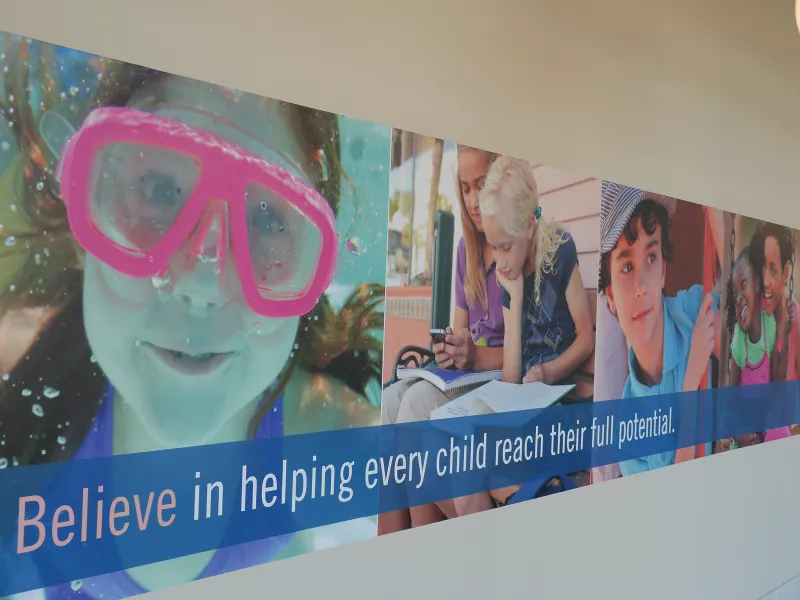
High tech supports high touch
Before Nemours Children’s Hospital of Orlando opened its doors in 2012, Dr. Stephen Lawless, its Senior Vice President and Chief Clinical Officer, spearheaded the initiative to integrate medical excellence with the latest in technology to provide young patients with an unprecedented level of care and safety. His brainchild, the Tactical Logistics Center (TLC) would be the place where experienced paramedics remotely monitored every inpatient 24/7, checking vital signs, lab work, patient history and clinical reports. With the addition of Axis cameras in every patient room tied into the monitoring system, paramedics would serve as additional eyes and ears for the nurses, doctors and parents.
“Nemours is one of the first pediatric hospitals to implement this third-level monitoring with video verification,” says Joe Summanen, Technical Architect for Nemours Children’s Hospital. “Parents truly appreciate how we’re able to provide that extra level of care, even when no one is in the room.”
We’re always taught in school to treat the patient, not the monitor. The Axis cameras let us check on patients and actually see their physiology rather than strictly rely on the clinical data to spot trends and identify problems.
Zoning in on the patient
Every patient’s room is divided into three zones: caregiver, patient and parent. To ensure privacy, the Axis camera’s field of view is limited to the patient’s bedside. Paramedics call into the room to let occupants know that the camera is being turned on and within three seconds, the red LED light on the Axis camera turns on and the TLC has eyes on the child.
Nemours chose AXIS P33 Fixed Dome Network Cameras not only because they could provide extremely sharp images but could also handle the challenge of a wide dynamic range of lighting conditions. The latter was important because atypical of most hospitals, children are allowed to control the lighting in their room and can choose from a wide range of fun colors to illuminate their area.
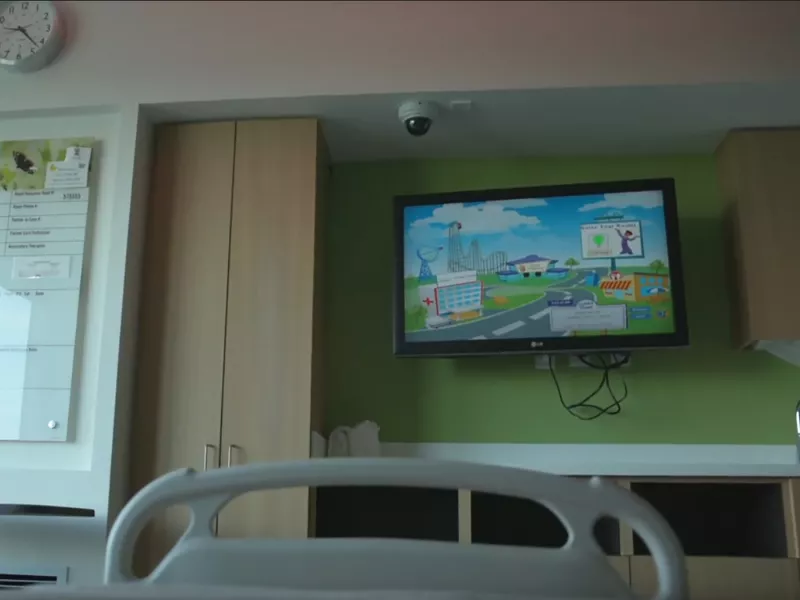
Providing another layer of oversight
For the nurses and physicians, giving the TLC eyes on the patients has been essential to safe, advanced pediatric care. “It’s reassuring to our medical team to know that even if they’re not in the room our TLC paramedics are checking on their patient,” says Melendez.
Paramedics can also use the Axis cameras for independent verification of any medical activity happening at bedside. “For instance, we can help clinicians with procedural checklists or confirm whether chest compressions are being effective or remind them when they last pushed a certain medication,” explains Melendez. “Or if we see an emergency developing we can quickly call in additional support personnel for them so they don’t have to leave the patient’s bedside to make the call themselves.”
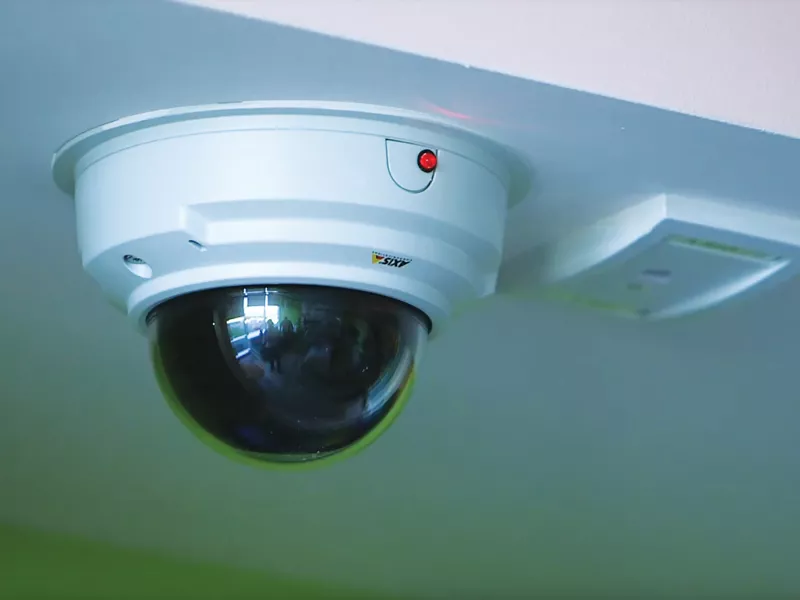
In a hospital setting where alarms are constantly going off, Nemours tries to provide as much normalcy for its young patients as possible. That includes furnishing patient rooms with TV sets and video games. “Sometimes the children get so excited during play that their heart rate goes up and sets off alarms,” shares Melendez. “Our job as TLC paramedics is to quickly sort through those alarms, turn on the cameras and look in on the patient to determine whether a response is needed. It would be a real nuisance, and more concerning, a serious distraction from other patients’ care if the nurses had to be constantly racing to non-events.”
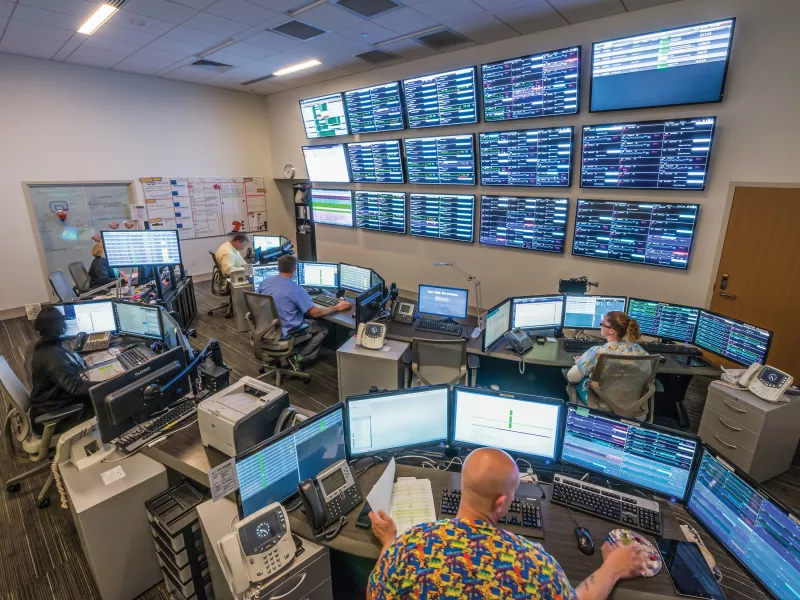
Melendez points to a time when a patient was undergoing a respiratory treatment that shakes the patient in place. This triggered a v-tach alarm indicating a lethal arrhythmia. A paramedic turned on the room camera and saw what was happening and quickly dealt with the alarm. “We have a protocol in place that requires the respiratory therapist to inform us ahead of time about the procedure,” explains Melendez. “In this instance the clinician simply forgot. But the cameras helped us avoid an unnecessary code blue.”
With Tactical Logistics Center paramedics continuously monitoring patients in the neonatal intensive care unit through the Axis cameras – seeing how they’re doing and how they’re acting – clinicians feel like they can leave the room to care for another sick child without fear that they’re leaving the patient unattended.
Life-changing response times
Even when a patient’s vital signs are trending well, paramedics at the TLC remain vigilant because in children, even a minor spike in temperature or an unexpected drop in respiration can send a patient into distress. And any delay in responding to the situation can have dire consequences. A study published by JAMA Pediatrics discovered that alarm fatigue is an industry challenge as it can take nursing staff over ten minutes to respond to less critical physiological alarms. Thanks to having cameras in every patient room, paramedics can observe sudden changes within seconds and quickly dispatch a code blue or rapid response team to save a child’s life.
One such episode occurred in the middle of the night after the attending nurse had just left a toddler’s room. Suddenly the child’s vital signs indicated he was having a febrile seizure. The paramedic monitoring the child quickly radioed into the room and announced that the camera view was going live. Based on what the paramedic saw, he pushed out an immediate alert to the nurse and to the rapid response team who arrived at the boy’s bedside within seconds, saving him from brain damage.
In another instance, the Axis cameras helped the team stop a sick teen from leaving the hospital without permission during an abduction and elopement alarm. “When we saw that the patient wasn’t in his room, the TLC notified the appropriate escalation team,” says Melendez. “With all the network of cameras we have throughout the hospital, we were able to find him before he left the building.”
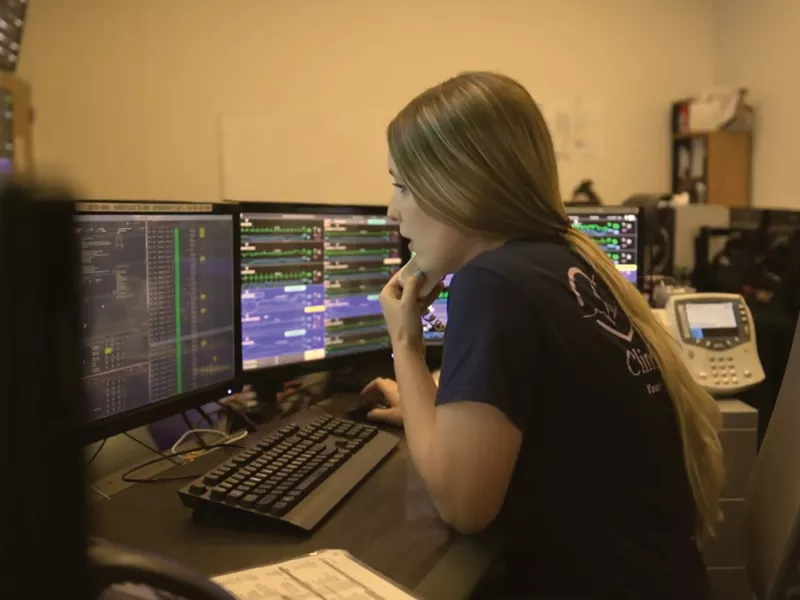
Proactive care improves clinical outcomes
In the TLC, paramedics are constantly surveying and assimilating data from the electronic medical records, looking for indicators of infection, or more importantly sepsis. Adding video cameras to the mix of technologies provides paramedics another critical tool for instantly assessing a child’s well-being. “Giving paramedic the ability to look into the room leads to patients getting the attention they need much quicker,” says Dr. Al Torres, Medical Director of Clinical Logistics and Respiratory Care at Nemours Children’s Hospital. “As a result, we’re becoming more proactive in our responses rather than reactive.” According to Torres, that translates into far fewer code blues where a patient is without a pulse or not breathing and more rapid response team activations to help clinicians avert a dangerous decline.
Watch their story
Like all medical facilities, Nemours Children’s Hospital continuously monitors patients’ vital signs. But patient health can’t always be assessed by clinical data alone. Nemours created a Tactical Logistics Center integrated with Axis network cameras in each patient room so that paramedics remotely monitoring patient vitals could also visually see if the child was in distress and call for immediate medical attention. This innovative concept of third-level monitoring is transforming the quality of care for these pediatric patients and their families.
Products & solutions

Healthcare
Our partner organizations
Get in touch
Want to know how you can benefit from Axis solutions? Get in touch and we will help you.
Contact us